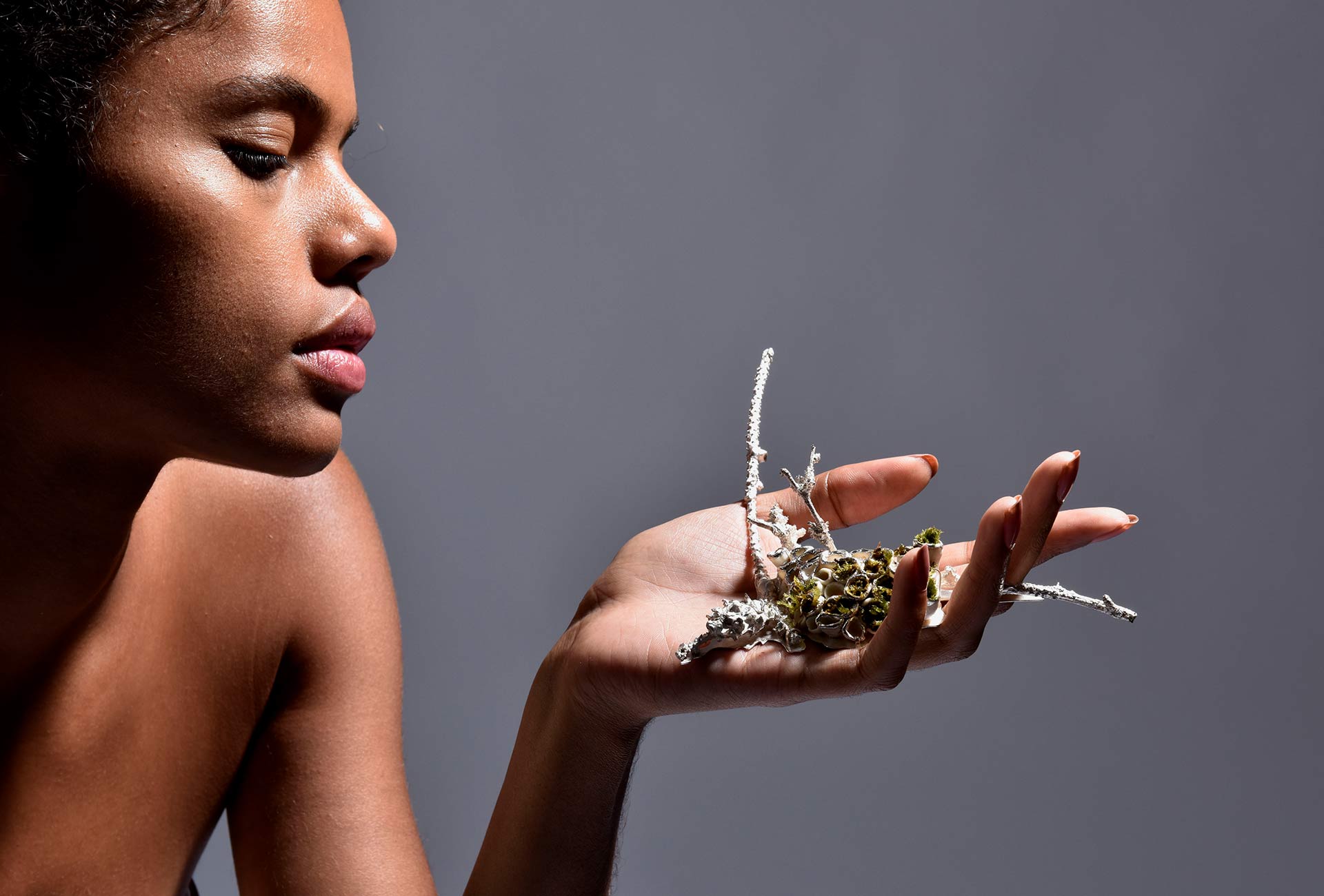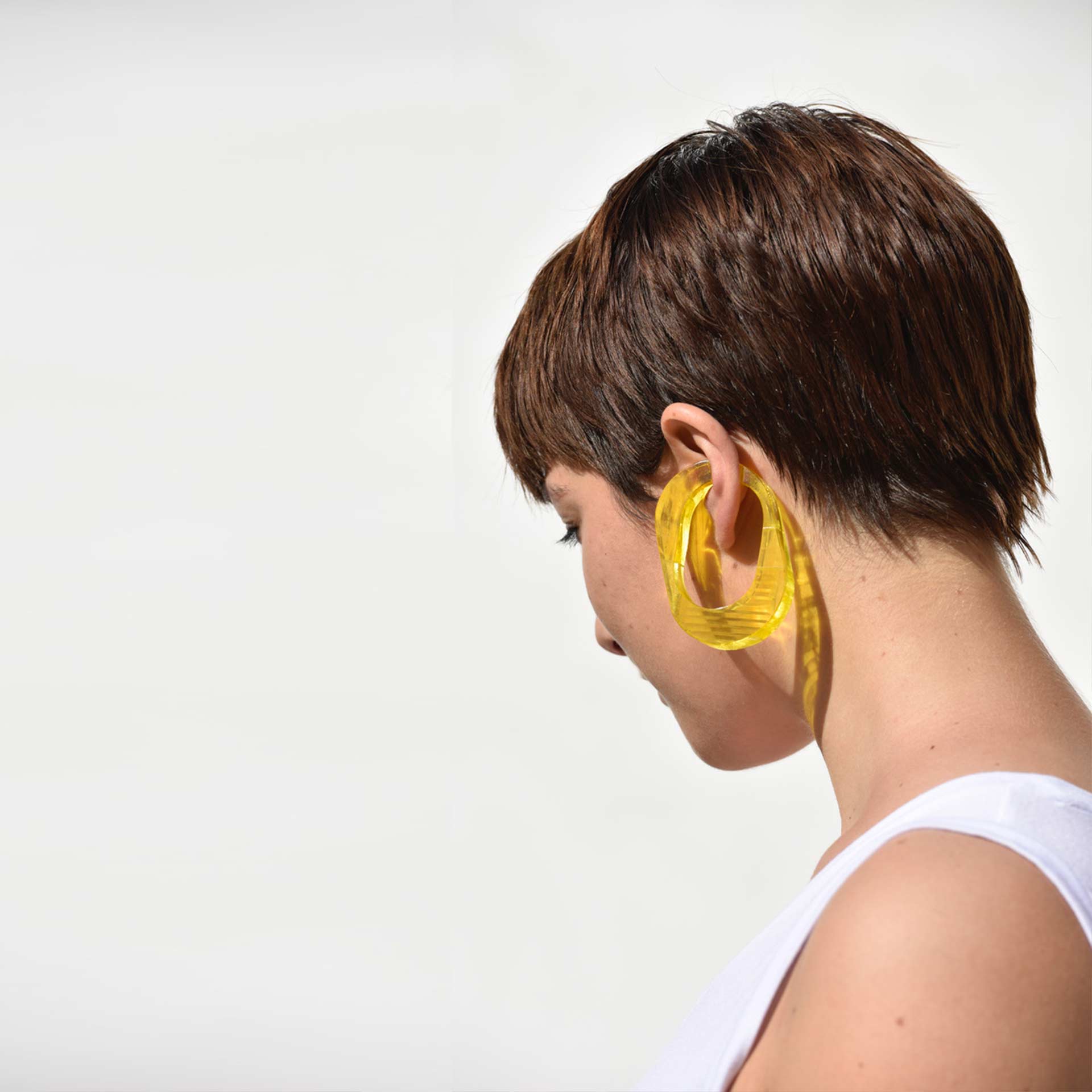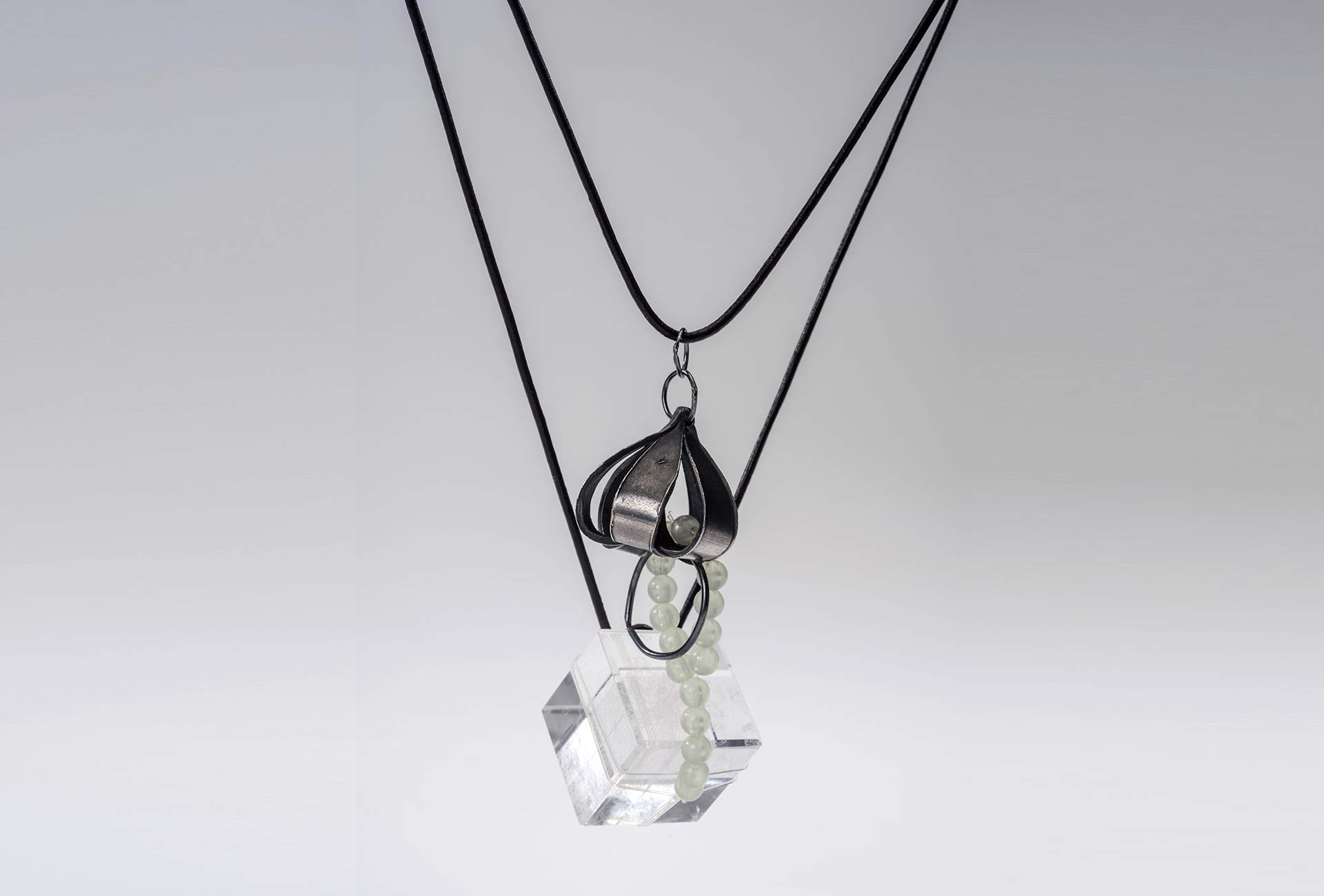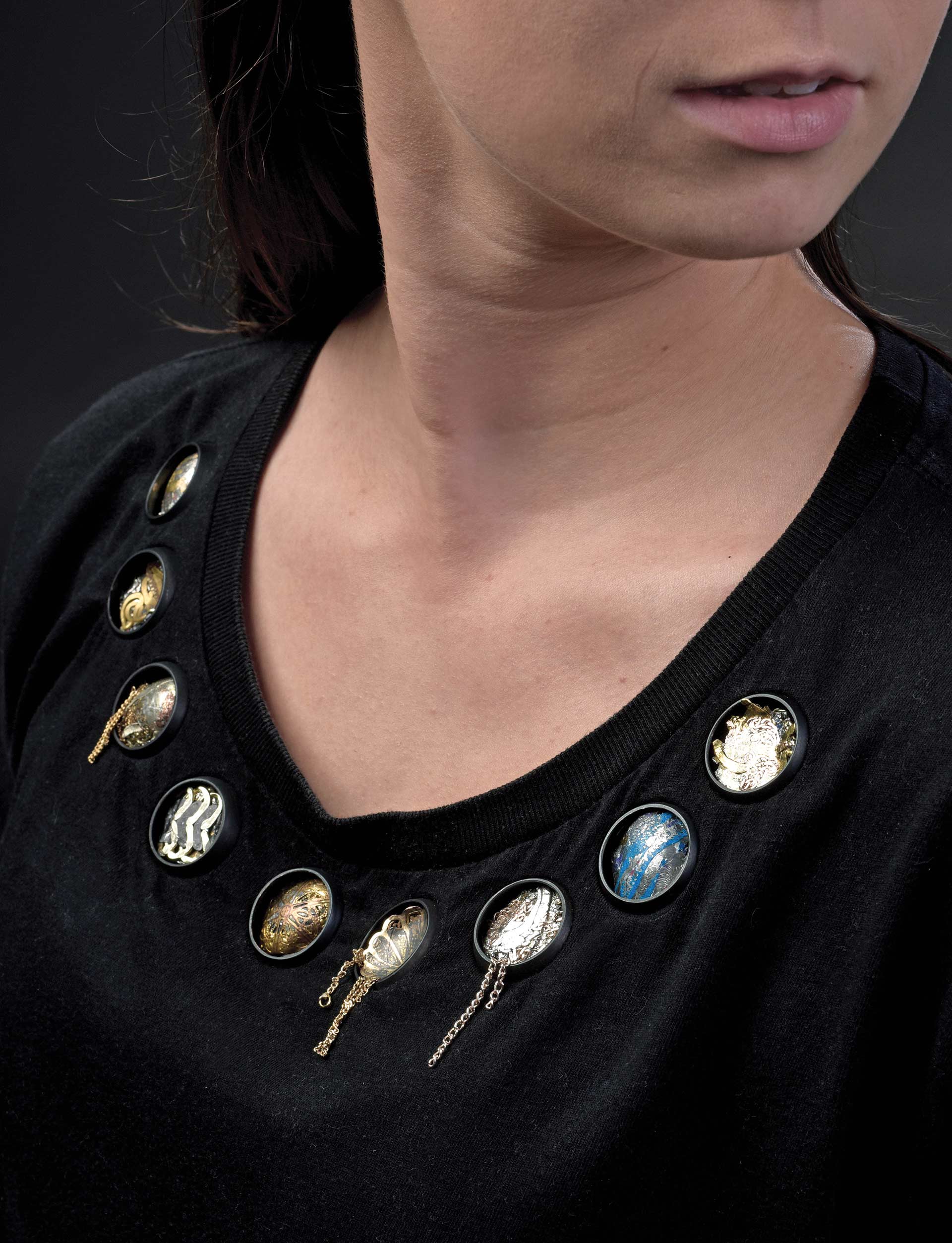The subject of sustainability and the environment is increasingly becoming the focus of attention at universities of applied arts. This is also evident in an exhibition of jewelry by students at the HfG Pforzheim. The students’ work is currently on display at Norbert Mürle and Michaela Thäsler’s Kunstraum Belrem. The project was directed by Jan Spille and Professor Christine Lüdeke. Last semester, Spille held a teaching position in the jewelry department at the Hochschule für Gestaltung Pforzheim. The goldsmith became famous for his workshop, where he uses only fair-trade gold.

Celine O’Neal, brooch Natural Affinity. Fairmined silver, porcelain, plants, earth, glass. Her three brooches and a chain refer to the symbiotic system of men and nature. Photos Petra Jaschke / model Celine O’Neal.

Johanna Seibert, earrings plain plastic. Recycled acrylic glass. “We often associate plastic with poor quality and pollution. But plastics are highly specialized materials.” Photos Petra Jaschke / Model Emelie Schreiner.
The students’ project was flanked by various online symposia featuring international experts on ecologically and socially fair strategies in product design. Professor Michael Braungart spoke at the exhibition’s opening on July 23, 2020. The chemist developed the “Cradle to Cradle” system in the 1990s together with the US architect William McDonough. The aim is to achieve a consistent and thorough recycling economy, either by bringing biological substances into cycles or by keeping technical products continuously in cycles. In either case, no environmentally harmful wastes should be produced.

David Rauch Saavedra, earrings Bamboo. Bamboo. The animalistic dynamics develop from the material and reflect the symbiotic qualities of the bamboo and its surroundings. Photos David Rauch Saavedra / model Darlene Schiebel.

Lena Pfeiffer, necklace Data Memoria. Recycled silver, glass, leather. The wearer’s data is long-lasting engraved in 3D and a kind of new gemstone in its crystalline effect. Photo by Petra Jaschke.
Growing new roots from past to present
Christine Lüdeke and Jan Spillees write about their project: “We are part of a holistic and interlinked structure. Our actions as people and as designers are based on a causal relationship between us and all parts of the common system. We take, we give, we grow away from the Earth, and we go back into the Earth. Our actions leave traces with our fellow human beings, in our environment and, of course, with us.
Questions of aesthetics, value and sustainability acquire compelling creative power in this context. We discuss new topics, develop personal attitudes and find new definitions in the ongoing debate surrounding the field of sustainability. We research design approaches and formal languages in the exciting interrelationships among material, process, social environment and impact. Our approach to the topic is wide-ranging, critical, constructive and unprejudiced.

Zoé Pfortner, earrings Mold is the New Orange. Moldy orange peel, copper. The mold works as an adhesive and combines with copper. This over time also develops in color. Photo Petra Jaschke / Model Carina Da Silva Fernandes.

Sophie Krautmacher, brooches fashinated. Old costume jewelry, blackened copper remnants. Old fashion jewelry is pressed into unique pieces and enhanced. Photo Petra Jaschke / Model Jule Speck.
We conducted our initial research into materials and processes in our own lockdown islands, each of which is an apt metaphor for a closed system. Our personal findings from this research revealed six sustainability fields. Online talks with inspiring creators on the topics of fair trade, the cycle, earth to earth, the symbiotic system, plastics and recycling, and repurposing highlighted different facets and links between these fields and set a discussion in motion that will be followed up. The resulting jewelry collections reflect the variously developed attitudes, bring them close to the wearer’s body, and enable us to become an intimate participant in the discussion and to continue it.
- —
-
Kunstraum Belrem 8
Belremstraße 8
75180 Pforzheim
Germany - Thursday–Friday 11 a.m.–6 p.m.
Saturday 11 a.m.–4 p.m.
or by appointment - Link